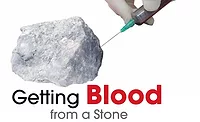Standard Operating Procedures Made Simple



The most effective managers in business have the ability to take higher-level concepts and make them simple. And not just simple, but super simple, so any employee, regardless of their education or experience level, can understand and execute them. This is in no way to suggest that the tactics of these managers are unsophisticated. Quite the opposite is true; the impetus of their actions is generally quite complex. The simplicity is in their execution and control.
Most, if not all, of the new clients I work with each year express a desire to have written standard operating procedures (SOPs) in their businesses. To a consultant, you would think this would be like lobbing a softball in batting practice. But not so much. Before inundating the client with pages of mind-numbing protocols we must first inquire about their motives.
When challenged, most business owners will admit the reason why they desire SOPs is to hold their employees accountable for what they are supposed to do. The problem with this is that words on paper do not hold anyone accountable for anything. Accountability stems from having the opportunity to act in an accountable manner. Not from being told how and when to do so.
When we dig deeper, we often find the motives for wanting SOPs in a business are rooted in managerial deficiencies and attempts to make unproductive and unreliable employees better. While well-documented SOPs can make a manager’s job easier, they are certainly not a substitute for good decision making, communication, or the many other competencies necessary to make a manager effective. As for the performance of the employees, that is a matter of work ethic and character, and there isn’t a SOP manual written that can improve these traits.
In addition to these documents not addressing the leadership failures of a business, they are also highly unique to each company, making them nearly impossible to implement from a universally-written manual. This means someone has to compose them on a case-by-case basis, which takes time—a lot of time. As if that wasn’t discouraging enough, the icing on the cake is that they are risky from a legal standpoint. Any good lawyer will tell you a set of highly-detailed SOPs opens the door to negligence claims if not followed completely.
So what value is there to standard operating procedures? The real value is in the intended result, not the documents themselves. The key is in the word “standard.” The standardization of business processes makes improvement possible. Businesses use SOPs for the same reasons a good cook follows a recipe, a pilot follows a flight plan, or a builder uses blueprints. The desired result is consistency. If the result is desirable, the procedures are sound. If not, one or more variables can be easily identified and changed until the desired result is achieved.
The concept of creating standard operating procedures is actually quite fundamental. If you run an internet search you will find a multitude of 10- to 25-step methods on how to create the perfect SOP manual. After completing several successful process improvement projects with a variety of different size companies, I have found the following method to be the most beneficial. It also involves only four steps, making it super simple.
Step 1 – Create a map
Most adult learners have very short attention spans. They will grasp concepts more easily and retain that knowledge by seeing things visually as opposed to reading a written set of instructions. This is why ready-to-assemble products come with more pictures than words.
Any graphical format will do, whether it is a flow chart, process map, activity table, or diagram. Personally, I prefer a cross-functional flow chart that has a timeline across the top and positions or job titles down the side. The body of the flow chart is then populated with all the activities necessary to complete the process. This is a universal tool which can be used to map out any process in a business. The result is a tool that is easily read, understood, and modified if necessary. It also provides managers with a simple method of training new employees.
These process maps and flow charts are best created with the input of employees who actually do the work. I like to start with a summary level master plan that looks at the process a business goes through to produce their products or services from a very high level, without too much detail. This allows us to gain a perspective on how activities and sub-processes relate to one another.
Step 2 – Identify the areas of priority
Once a master plan is established, we can begin to break it down into smaller parts before documenting the procedures. Those who are detail-oriented may be tempted to start at the beginning and work through the composition of procedures from start to finish. I have watched many attempt this, only to have the initiative derailed early on because they are overwhelmed with too much detail. To avoid this from happening, I recommend identifying specific areas that are hot spots or known deficiencies within the organization and making them the priority. This generally leads to a list of half a dozen or more sub-processes that require attention.
Step 3 – Document the procedures
This is where choosing the correct format is important. The best format I have found to capture enough information without being too wordy or overwhelming is One Point Lesson (OPL). This format has roots in the lean manufacturing environment and, with slight modification, can be extremely effective in service industries.
The main section of the document will contain a numbered or bulleted list of activities necessary to complete the process. The list is a collection of “quick hit” action-oriented instructions like, “do something,” “call someone,” “enter information,” etc. This list of activities is then followed by a list of corresponding parameters that must be adhered to. The parameters must be measurable for performance tracking purposes and should be listed separately from the activities so they are visible and easily modified if necessary. They are generally written as, “something should be done in accordance with industry standard #1234” or, “someone should be called within X number of days,” or ”the information should be entered in __format.”
Lastly, the procedure written in OPL format should have a reference section that directs the reader to examples or supporting documents. These can be industry standards, examples of completed forms, or even reference materials like websites or external documents. Separating these items from the actual procedure keeps things clean and simple. The reader can then refer to the supporting information as needed, allowing the company to make changes and adjustments to those references without having to modify and file an entire new procedure.
Step 4 – Implement and train
The implementation of, and training on, a company’s standard operating procedures becomes much easier at this point if the first three steps are completed as described. Employees then have a visual to follow. The processes being implemented or refined are those that are the most important to the company. And there is a simple, clean, and standard document that the employees had a part in creating.
SOP manuals and process maps that sit on a bookshelf and collect dust are worthless. Making them accessible and visible to the organization by using them as improvement tools can breathe life into them. Since each procedure has measurable parameters or metrics, managers can monitor those indicators regularly and take action if the results are undesirable. Quite often these results can be traced back to some sort of procedural deficiency. This paves the way for situational training and reinforcement of the best practices established by the company.
The last element to implementation and training involves control mechanisms which can help keep employees on task with the activities required in the procedure. These can be checklists or inspections put in place as methods of guiding, rather than demanding, adherence to the procedures.
If you present the idea of creating standard operating procedures to top-performing employees, chances are their eyes will roll back in their heads and they will ask, “Why do we need to make things so complicated?” Because they are already doing the things necessary to be top performers, writing out a procedure seems like an unnecessary step to them. However, SOPs are valuable tools managers can use to train new employees to be top performers and to improve operational performance through standardization and quality control. The key to their effectiveness is keeping them simple. Super simple.
Looking for a reprint of this article?
From high-res PDFs to custom plaques, order your copy today!








